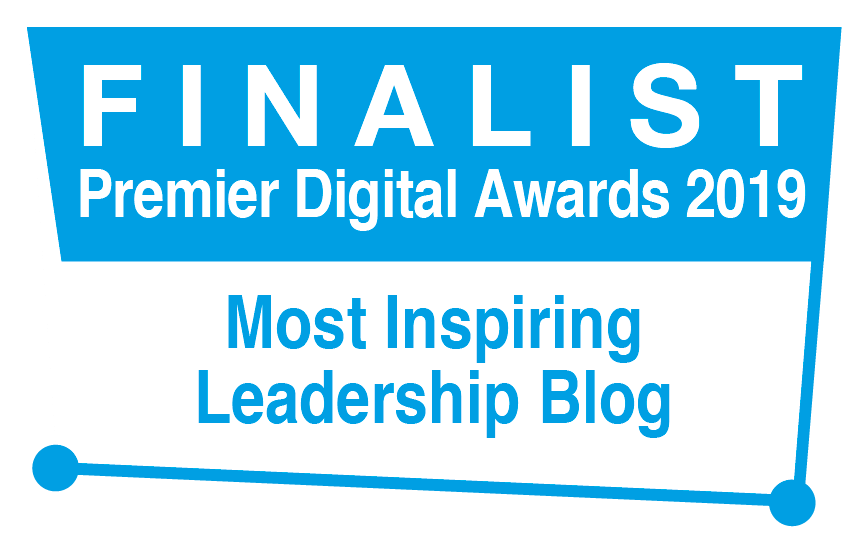|
My boss had been reading John Ortberg’s ‘Everybody’s Normal Till You Get to Know Them’ and it was time for us to plan our annual leadership team retreat. Looking for a theme title, he suggested half-jokingly, ‘How about ‘Everybody’s Weird’?’ I laughed at first but then thought for a moment…what a great concept and idea. It felt inspired. How to blow away any sense of normality and conformity and to meet each other afresh as we really are. Our creativity lies in our unique weirdness and what a great way to explore our individual quirkyness and its potential for the team and organisation.
Every group, every team, develops its own normative behaviours. Some even prescribe them by developing explicit competency and behavioural frameworks. It provides a sense of identity, stability and predictability. It can also improve focus and how people work together by establishing a set of ground rules, how we can be at our best. The flip side of all of this is that a team can begin to feel too homogeneous, too bland. It can lose its creative spark, its innovative spirit. The challenge was how to rediscover our differences, our wonderful, exciting, diversity in all its weird complexity. We invited people to bring objects that represented something significant in their personal lives and to share their stories. We invited people to use psychometrics to explore their preferences to shared them in the group. We invited them to challenge the psychometric frames, not to allow themselves to be too categorised. We invited people to challenge stereotypes, to break the moulds they felt squeezed or squeezed themselves into, to look intently for what they didn’t normally notice in themselves and each other, to allow themselves to be surprised and inspired by what they discovered. It felt like an energetic release. People laughed more, some cried more, others prayed deeply together. The burden of leadership felt lighter as people connected and bonded in a new way. It felt easier to challenge and to encourage. By relaxing into each other and themselves, people became more vibrant, more colourful, less stressed. They saw fresh possibilities that lay hidden from sight before. They discovered more things they liked about each other, fresh points of common passion, interest and concern. They built new friendships that eased their ways of working. It felt more like team. What space do you and your organisation allow for weirdness? Do you actively seek, nurture and reward differences? Do your leadership style and culture bring out and celebrate individuals’ strange idiosyncracies, each person’s unique God-given gifts, talents and potential? Have you had experiences where a capacity for weirdness has enhanced your team or organisation’s creativity and innovation? Do you risk inadvertently squeezing out the best of weirdness by policies and practices that drive towards uniformity? Could a bit more weirdness be more inspiring and effective – and fun?! :)
78 Comments
A good friend in the police service once commented how he would arrive at work each day, put on his uniform and spend the rest of the day ‘impersonating a police officer’. He had a clear idea in mind of how a police officer would typically speak and behave and so consciously acted it out. It was like playing a role in a theatre with the uniform acting as both costume and psychological prop.
A young girl working as a prostitute on the streets of Bangkok told me how she always used a pseudonym when working with clients. This name kept her real identity hidden and provided her with an alternative persona. By doing this, she was able psychologically to disassociate and protect her ‘true inner self’ from the separate persona that was engaging in sexual acts with strangers. A priest spoke of the pressures he felt to live a public life under constant moral scrutiny. By wearing a dog collar, he identified with a faith, a role and a calling that demanded high levels of personal integrity. Over the years, he struggled and found ways to live a more integrated and authentic life commenting that, ‘the real question is not how to be a priest but how to be oneself who is a priest.’ The first example here is of a person who found ways to fulfil a role by copying the behaviours of role models within that specific professional culture. The second is a person who learned to survive by deliberately separating herself psychologically from her persona-in-role. The third is a person who sought to find ways to live out a role by becoming more truly himself within that role. I’ve worked with numerous leaders who have experienced similar challenges. How to live and cope with one’s own expectations of leader and leadership as well as those imposed by the organisation or culture, not to mention the actual or imagined expectations of the board, peers and staff. It can feel stressful, daunting, isolating, debilitating and anxiety-provoking. It can result in burnout. Sometimes it’s a case of ‘impostor syndrome’ where a person believes he or she has been appointed to a role under some assumed false pretext or mistake. In such a situation, the person may put on a brave face and live in continual fear of being found out. ‘Sooner or later, they will discover that I’m not as good or capable as they think I am.’ It’s a form of exaggerated negative self-evaluation. I’ve experienced similar pressures myself, especially 6-12 months into a new job. During the first 6 months, I tell myself it’s OK not to know everything because I’m new. There comes a point at which, however, I risk placing expectations on myself that I should now know more than I do. It’s a type of personal anxiety (fear of failure) combined with social anxiety (fear of being negatively evaluated). One coping strategy is to wear a metaphorical mask like a stage actor. The problem is that it’s the same phenomenon the word ‘hypocrite’ points towards: literally, one who pretends to be what he or she is not. It lacks reality and authenticity, takes considerable energy to sustain and can lead to stress and exhaustion. It prevents the person being and contributing their best, as they really are. There are spiritual parallels in Christian theology where people are both challenged and encouraged to ‘move into the light’ or to ‘live in the truth’ where everything is exposed for what it really is. It’s as if we need to find a space, a relationship, where we can see clearly and be totally honest, real and accepted in order to build out from that place. It’s about learning honesty, integrity and peace. It’s like the equation: ‘trust = risk + support’. A person is more likely to open up, to be real (which can feel risky) if, when he or she takes such a step, they experience genuine acceptance and support. It reduces anxiety, helps the person think more clearly and creatively, fuels their energy and motivation, enables them to hear critical feedback and builds trust for the future. Various coaching and therapeutic schools draw on similar principles, e.g. providing unconditional positive regard (e.g. person-centred); enabling a person to question and test their beliefs and assumptions in order to get a better sense of what is real (e.g. cognitive behavioural); experimenting with new behaviours to discover new experiences and ways of being and doing (e.g. gestalt). In my coaching work with a leader, I may encourage him or her to explore and grow using a range of approaches, e.g. draw graphic images, select objects/symbols or strike physical poses that depict (a) their idea of the leader they believe the organisation or others expect them to be and (b) the leader they believe they are or aspire to be, then explore the commonalities and differences. Alternatively, I may encourage the person to experiment wearing different types of clothing, to practice holding themselves in a variety of postures, to speak in different volumes or tones of voice to explore which they feel most comfortable with, to find a physical expression that best enables them to be who they are. I may encourage the person to brainstorm what they believe others expect of them, believe about them as a leader and to test those assumptions openly with others. I may encourage the person to vividly imagine themselves as e.g. a humble, confident, capable leader and to role play it focusing on real scenarios, reflecting on thoughts, feelings, behaviours and responses as we do it together. I may provide the person with toy figures and invite him or her to create a configuration of their current key relationships (e.g. leadership team), then ask them to move the figures into different configurations to reflect on how that feels and what insights emerge. I may also invite them to reflect on past life or work experiences that have felt very similar (e.g. family, previous teams). I may encourage the person to step back and consider what their own experience might point towards culturally or systemically. If, for instance, the leader feels unsafe to be honest, what light does that shed on, for example, what is considered acceptable and unacceptable culturally within that environment and what can the leader do practically and realistically to influence positive change. I would be interested to hear of others’ experiences in this area and how you have worked through them. Have you experienced 'imposter syndrome'? Have you struggled to reconcile who you are with the role you find yourself playing? Have you coached, mentored or trained others working through similar personal or professional challenges? If so, I would love to hear from you. What makes a great influencer? What influences you? What have been your best and worst experiences of influencing other people? What have you found makes the difference?
Influence is sometimes described as the art or psychology of persuasion. It’s about creating a shift in a person or group’s beliefs, thinking, feelings, attitudes, actions or behaviour. We’re influencing all the time through our everyday social interactions but not always in the ways we would hope for. For example, as you read what I’m writing here, your own views about influencing will be affected at some level. It could strengthen your existing beliefs or create a shift, no matter how small. The art of influencing is at heart about enabling a shift in the direction that the influencer hopes for. This implies at the outset that influence demands intentionality. It implies a deliberate act, a strategy or sorts, with a particular goal in mind. This intention is not always clear, however, even to the influencer. We’re not always sure what influences our own behaviour, even if we rationalise or post-rationalise it at a conscious level. So, for instance, I could tell and convince myself that I’m behaving or acting in a certain way because that explanation feels more personally or socially acceptable, even if deeper factors or motivations are at work at subconscious or unconscious levels. Assuming for argument’s sake that I have a clear and conscious intention or goal in mind, what can I do to create a shift in another towards my desired direction? As a leader or manager, I could use my positional power to demand a change in action or behaviour. It could result in compliance to achieve reward or avoid punishment, or resistance as an effort to avoid the change. It’s unlikely, however, to change the other party’s underlying beliefs, values, attitudes etc. in the way that I may hope for, especially if I want to achieve transformational and sustainable change. This is of course one of the critical challenges of change leadership: how to move a person or group to a psychological place where they choose freely to change without coercion or external pressure. It’s the same kind of challenge faced by trainers and marketeers: how to influence people’s attitudes, choices and behaviours without access to formal power or authority to ensure those changes happen. It begs interesting and important ethical questions, e.g. how to achieve a shift without unethically manipulating people or groups, especially those who are vulnerable. In my experience, a key factor in influencing is understanding what matters most to other people. This is often the starting point for market research, surveying targeted populations to find out what they choose and why. If I understand what matters to you, what you value most, I can frame my product, service, idea, argument, language etc. in terms that will make it feel familiar, acceptable or attractive to you. In advertising, I may use people or images you consider iconic, admirable, inspiring or trustworthy to build a psychological bridge towards you – and to entice you to cross it. The same principles apply to influencing in the workplace. Recognising that employee engagement influences talent retention and organisational performance, many organisations conduct staff surveys, pulse checks, focus groups etc. to understand how the organisation feels to those who work for it. Such surveys provide opportunity for leaders and staff to influence the organisational culture and climate and for staff to influence what leaders pay attention to. Some of the more sophisticated surveys check ‘what matters most to you’ alongside general satisfaction scores. Many organisations also use a whole variety or initiatives including competency frameworks, performance management systems, reward and recognition strategies to identify, publicise, affirm and reinforce behaviours that leaders consider most valuable for the organisation. All of these processes aim at some level to influence perspectives, attitudes and actions. The leadership agenda involves not only understanding what matters most to staff but influencing what people will choose in order to align personal choices and decisions with what the organisation wants or needs. So, what are the key factors that enable us to be effective influencers? Firstly, have a clear and explicit intention. If we have mixed or hidden motives, we lack integrity, others will pick it up intuitively and it will undermine trust. If you’re unsure what your true motives are, reflect on this honestly with a critical colleague or friend beforehand. Secondly, research and understand what matters most to other people. If we can tap into others’ language, culture, values and goals and address them well in what we propose, we are more likely to build bridges and achieve win-win solutions. Thirdly, have a clear sense of what we want others to think, feel or do differently. This enables us to design and communicate messages clearly. I often ask myself before presentations or meetings, for instance: ‘What do I want people to think, feel and do as a result of what I do today?’ Fourthly, reward changes in ways that others value and appreciate. If we ask those we seek to influence, for instance: ‘How do you want to do this?’, ‘What would make this worthwhile for you?’ or ‘What would make a great outcome for you?’, it demonstrates humanity, relationship, humility and respect. Management literature is filled with guidance and case studies on how to change organisational culture. Some view culture as an overarching descriptor of ‘how we do things round here’. Others view it as a shared underlying belief system that influences behaviour and practice.
I think there’s some truth in both these viewpoints. They point to the shared nature of culture, that is, it includes the individual yet extends beyond towards a group: its values and ways of acting. It’s this shared dimension that differentiates culture from individual thinking or behaving. Yet it still feels like something is missing. Culture is a felt experience. Observing culture, studying it, analysing it, isn’t the same as directly experiencing it. It’s something about what it feels like, what it means personally, existentially to be part of something bigger than myself. And yet it isn’t just something I feel. It’s about a mood, a shared experience, something we within the culture feel, together. It’s an intangible phenomenon, a group dynamic, that feels tangible. It guides us, moves us, motivates us in subconscious ways that feel natural and mysterious. This is one of the reasons why culture change programmes are so problematic. If culture was simply about thinking or behaviour, it would be possible to devise methods that motivate and enable change in these areas. In some situations, that may well be all that is needed. In transformational change, however, we must pay attention to deep rooted existential issues, psychodynamic and social psychological phenomena, cultural climate and experience. It’s about working-with, certainly not doing-to, and that demands humility, wisdom and patience. |
Nick WrightI'm a psychological coach, trainer and OD consultant. Curious to discover how can I help you? Get in touch! Like what you read? Simply enter your email address below to receive regular blog updates!
|



 RSS Feed
RSS Feed